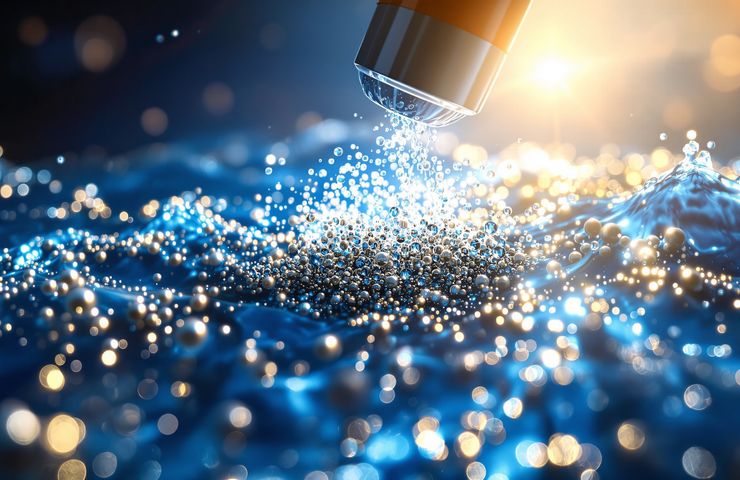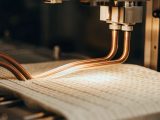
Hydrogen Production Boosted: Spinel Ferrites Shine in Visible-Light Water Splitting
August 27, 2025Picture this: you catch sunlight to split water into hydrogen and oxygen, then simply whip out a magnet to fish the catalyst right out. No, it’s not sci-fi—that’s exactly what spinel ferrites are promising for photocatalytic water splitting. Fast-forward to June 2025, and researchers are boasting record-breaking efficiencies with MFe2O4 (M = Zn, Ni, Co, etc.) nanoparticles. Sure, front-runners like TiO2 and CdS broke the initial ground, but their wide bandgaps and iffy stability under sunlight limited their real-world clout. These days, spinel ferrites tick every box: they’re made from abundant elements, flaunt narrow bandgaps (~1.9–2.2 eV), and shrug off harsh reaction conditions. By fine-tuning sol-gel processing, weaving in clever dopants, and building smart heterostructures, we’re edging ever closer to commercial-scale green hydrogen. Bonus: wrapping these nanoparticles in a conductive polypyrrole shell is giving them a durability and performance boost that’s hard to ignore.
How spinel ferrites work
The real trick lies in the spinel crystal lattice, where octahedral and tetrahedral sites host iron and transition-metal ions in a neat 1:2 ratio. Variants like NiFe2O4, CoFe2O4, or ZnFe2O4 tweak their electronic bands just enough to nail the ideal redox potentials. Shine sunlight on them and you get electron-hole pairs: the electrons bust down water to H2, while the holes oxidize it to O2. But the coolest part? These babies are magnetic. After the reaction, you run a magnet around the reactor wall and voilà—the catalyst particles stick like magic, ready for the next round. That magnetic recoverability slashes separation costs and vibes perfectly with broader sustainable energy goals.
Engineering breakthroughs: sol-gel, doping & heterostructures
Scientists have known forever that uniform nanoparticles make all the difference. That’s where sol-gel synthesis shines, churning out ferrite particles under 50 nm with spot-on stoichiometry—think higher active surface areas and fewer pesky trap states. Then there’s doping: swapping in Zn or Ni at the M site tweaks the band edges, driving hydrogen evolution rates north of 150 µmol H2∙g–1∙h–1 under one sun (100 mW/cm2). And let’s not forget heterostructures—pairing spinel ferrites with TiO2, BiVO4 or carbon nitride creates type-II junctions that steer electrons and holes to different zones, cutting recombination losses like a hot knife through butter. One study on mixed NiZnFe2O4/g-C3N4 composites reported a 45% bump in turnover frequency compared to unmodified ferrites, proving the power of interface engineering.
Polypyrrole nanocomposites amplify performance
While spinel ferrites nail light absorption and charge generation, coating them with a conductive polymer like polypyrrole (Ppy) really turbocharges the deal. By polymerizing it in situ, you get a thin Ppy layer hugging each nanoparticle, creating a slick electron highway and shielding the core from nasty oxidative damage. The result? Some lab setups have doubled their hydrogen output, and they’re still rocking over 90% activity after five-plus cycles. That kind of resilience is exactly what you need for industrial uptime—no one wants to swap catalysts mid-shift.
Market implications and the push for industrial decarbonization
With net-zero pledges flooding in across the globe, green hydrogen has vaulted to the top of the energy agenda. Cash is pouring into renewables-powered electrolyzers, yet catalyst costs still sting—especially when platinum-group metals dominate. That’s where spinel ferrites step in: cheap, earth-abundant iron and first-row transition metals that early economic models say could chop catalyst expenses by up to 60%. Imagine hydrogen fuel cells driving heavy-duty trucks, clean ammonia plants churning out zero-carbon fertilizer, and steel mills ditching coal. The result? Big wins in industrial decarbonization.
Scaling up: hurdles and breakthroughs
What works in a beaker doesn’t always translate to giant reactors. You need uniform light distribution, smart heat management, and pristine water to keep the catalysts from fouling. On the manufacturing side, cranking out tens of kilograms of sol-gel–synthesized nanoparticles with consistent quality? Easier said than done. But pilots are already in motion: academic teams teaming up with engineering firms to build 1–5 L photoreactors that circulate magnetic catalysts in thin films for top-notch photon capture. Hit those performance milestones, and we could see commercial-scale pilot stations by late 2026.
Environmental and collateral impacts
Cue the reality check: mining nickel and cobalt can be resource-intensive and polluting if it’s done without care. That said, compared to cadmium-based catalysts, spinel ferrites dodge some major toxicity concerns. Plus, magnetic recovery keeps more catalyst in play and trims waste disposal headaches. A full life-cycle assessment would weigh mining impacts against CO2 savings from ditching grey hydrogen. Early estimates hint at over a 70% cut in greenhouse gas emissions, even after factoring in feedstock extraction.
Looking ahead
So, are spinel ferrites the game-changer for hydrogen production? They’re not a one-size-fits-all silver bullet, but they’ve certainly earned their spot on the shortlist. As synthesis methods mature, interface tweaks sharpen, and scale-up kinks get ironed out, these catalysts might one day rival traditional electrolysis—without relying on pricey noble metals. What we’re seeing is a steady climb toward a sunlight-driven, truly sustainable energy future, and trust me, we’re just scratching the surface.



 With over 15 years of reporting hydrogen news, we are your premier source for the latest updates and insights in hydrogen and renewable energy.
With over 15 years of reporting hydrogen news, we are your premier source for the latest updates and insights in hydrogen and renewable energy.